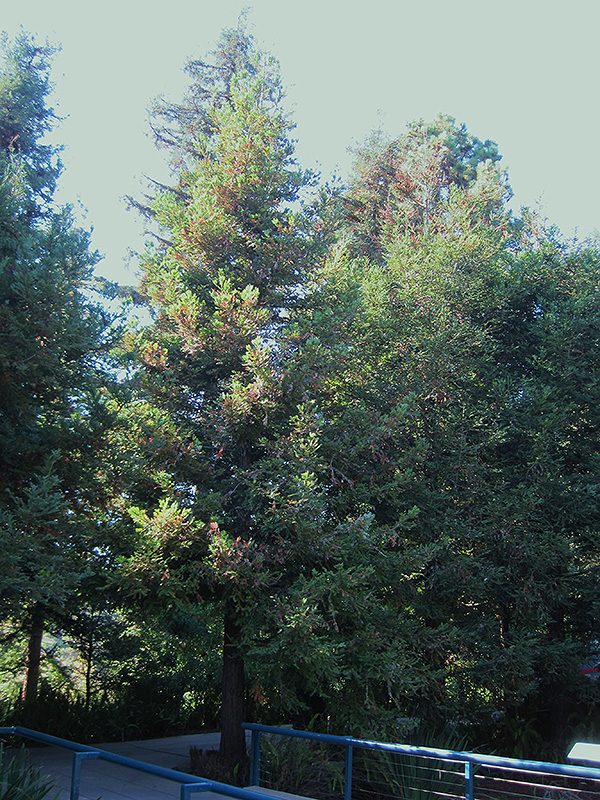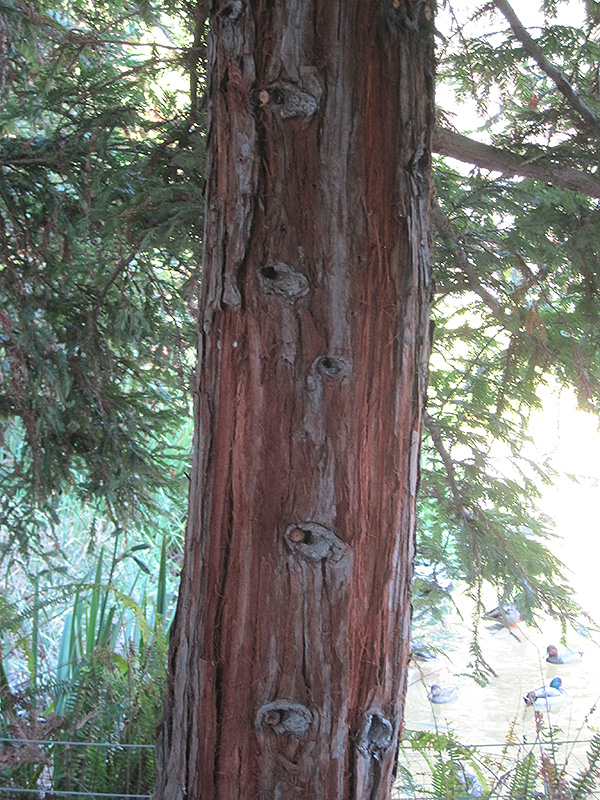Aptos Blue Coast Redwood
Sequoia sempervirens 'Aptos Blue'
Height: 70 feet
Spread: 30 feet
Sunlight:
![]()
![]()
Hardiness Zone: 7a
Other Names: California Redwood
Description:
A fast growing, sturdy selection with horizontal branching and pendant branchlets bearing rich, dark blue-green foliage; lovely reddish brown, spongy bark and a tall, pyramidal habit make this a beautiful accent for the right space
Ornamental Features
Aptos Blue Coast Redwood is primarily valued in the landscape for its distinctively pyramidal habit of growth. It has attractive bluish-green evergreen foliage. The fragrant sprays of foliage are highly ornamental and remain bluish-green throughout the winter. The furrowed brick red bark is extremely showy and adds significant winter interest.
Landscape Attributes
Aptos Blue Coast Redwood is an evergreen tree with a strong central leader and a distinctive and refined pyramidal form. Its relatively fine texture sets it apart from other landscape plants with less refined foliage.
This is a relatively low maintenance tree, and may require the occasional pruning to look its best. It has no significant negative characteristics.
Aptos Blue Coast Redwood is recommended for the following landscape applications;
- Accent
- Vertical Accent
Planting & Growing
Aptos Blue Coast Redwood will grow to be about 70 feet tall at maturity, with a spread of 30 feet. It has a high canopy of foliage that sits well above the ground, and should not be planted underneath power lines. As it matures, the lower branches of this tree can be strategically removed to create a high enough canopy to support unobstructed human traffic underneath. It grows at a fast rate, and under ideal conditions can be expected to live to a ripe old age of 200 years or more; think of this as a heritage tree for future generations!
This tree does best in full sun to partial shade. It does best in average to evenly moist conditions, but will not tolerate standing water. It may require supplemental watering during periods of drought or extended heat. It is not particular as to soil type, but has a definite preference for acidic soils. It is somewhat tolerant of urban pollution. This is a selection of a native North American species.




